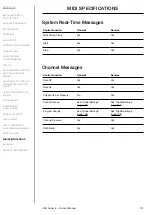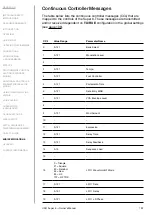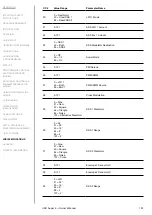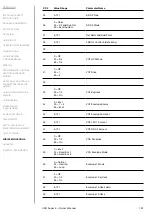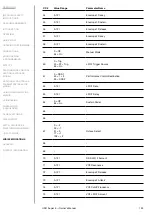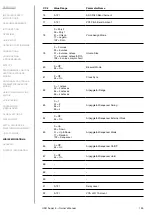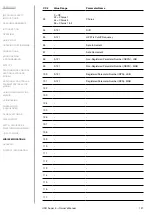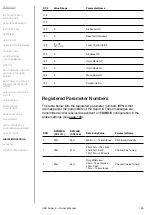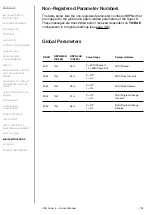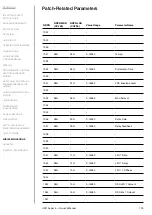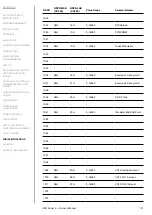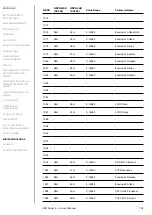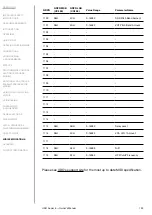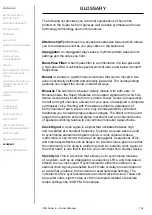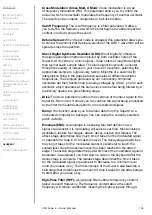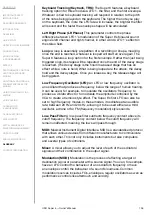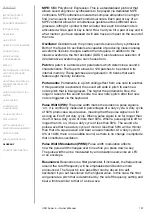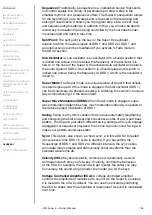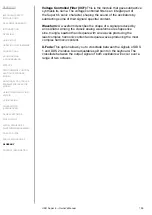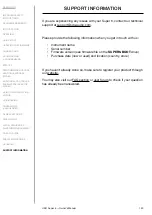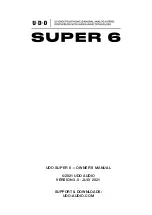
UDO Super 6 — Owner’s Manual
135
Cross Modulation (Cross Mod, X Mod):
Cross modulation is a type
of frequency modulation (FM). This parameter allows you to control the
amount which one oscillator modulates the frequency of another oscillator.
The result can be complex, clangorous or bell-like timbres.
Cutoff Frequency: The cutoff frequency is a filter parameter. It allows
you to define the frequency at which the filter begins to subtract spectral
content in order to shape the sound.
Detune Spread:
When Super mode is engaged, this parameter allows you
to control the amount that detuned versions of the DDS 1 waveform will be
spread across the spectrum.
Direct Digital Synthesis Oscillator (DDS):
Direct Digital Synthesis is
the signal generation method employed by both oscillator cores of the
Super 6. At its centre is a clock signal – three orders of magnitude higher
than typical audio sample rates. The clock signal increments a counter
through thousands of indexes in your choice of waveform, selecting the
appropriate sample to output every twenty-billionths of a second with
interpolation filling in the gaps between samples at different oscillator
frequencies. The samples produced by our numerically-controlled
oscillators are then transformed to analog voltages by a DAC, one for each
oscillator, which operates at the same clock rate before being filtered by a
preliminary analog low-pass filtering stage.
Drive:
The drive parameter controls the overdrive of the input signal to the
Super 6’s filter circuit. It allows you to overdrive the signal being processed
by the filter from subtle saturation to a more distorted signal.
Dump:
This function allows you to transfer data from the Super 6 to a
connected computer for backups. You can dump the currently selected
patch via MIDI.
Envelope (ENV): An envelope is a shaping tool that defines how a
signal or parameter it is modulating will evolve over time. Most envelope
generators feature four stages: attack, decay, sustain and release. The
attack stage determines how much time it takes for the modulated signal
or parameter to fade in to a maximum level. The decay stage determines
how long it takes for the modulated signal or parameter to reach the
sustain level once the maximum level has been reached in the attack
stage. The sustain stage determines at which level the modulated signal or
parameter is sustained if you hold down a note on the keyboard after the
decay stage is complete. The release stage determines the time it takes
for the modulated signal or parameter to decrease to a minimum level
once you release a key. The first envelope of the Super 6 also features a
hold stage that determines the amount of time it takes for the attack stage
to start after you press a key.
High-Pass Filter (HPF): A high-pass filter subtracts frequency content
below its cutoff frequency. The frequency content above the cutoff
frequency will remain unaffected, meaning the highs will pass through.
Summary of Contents for SUPER 6
Page 142: ......

